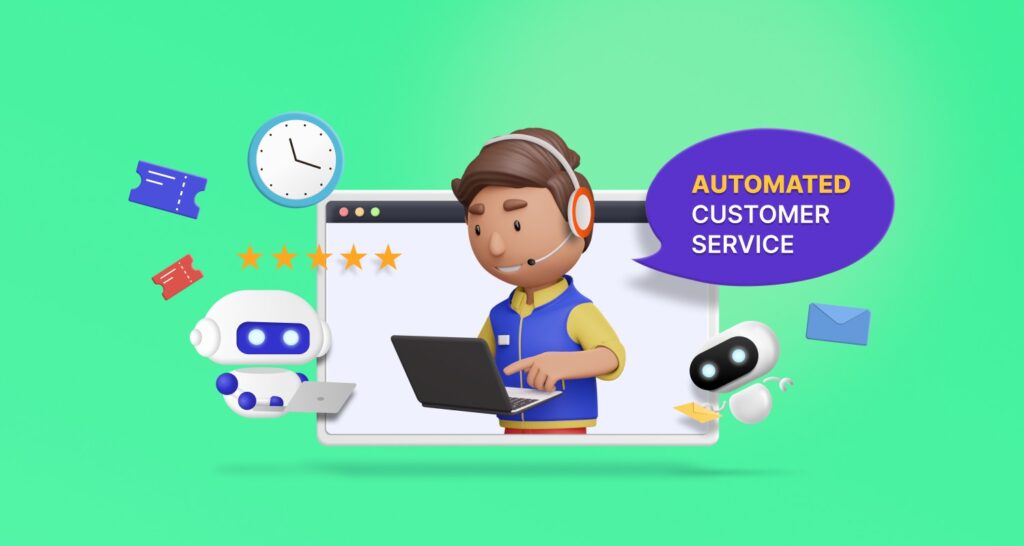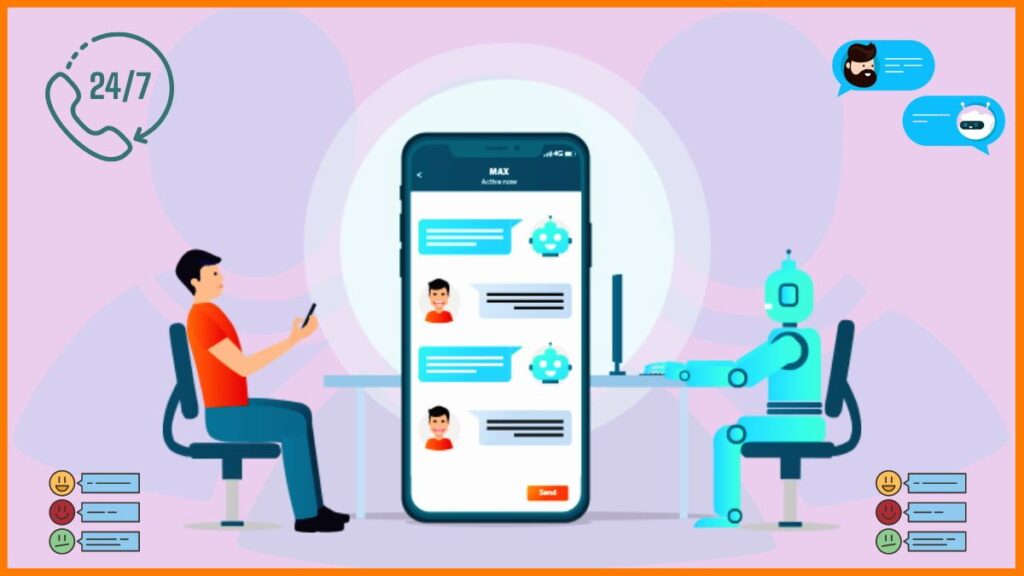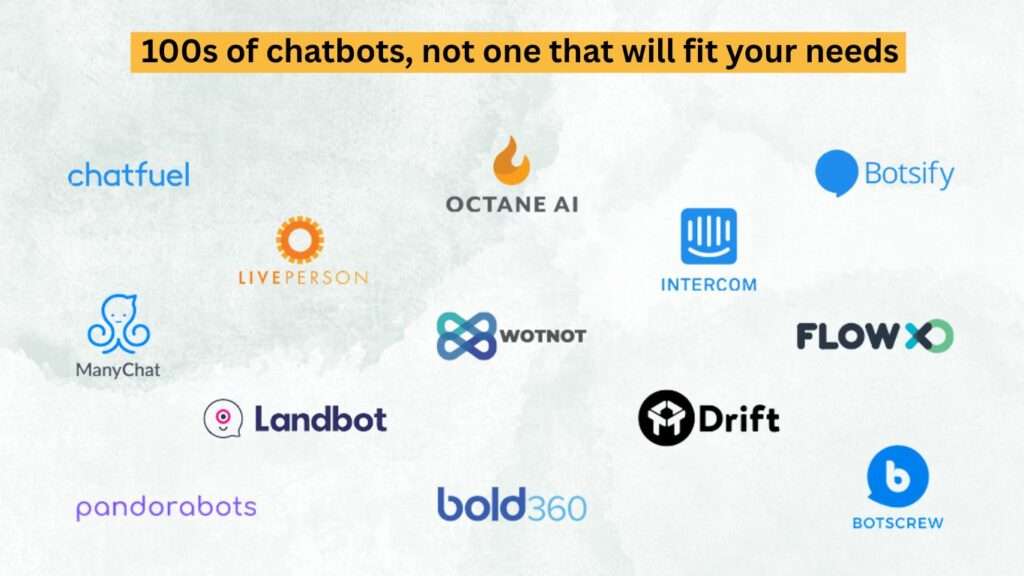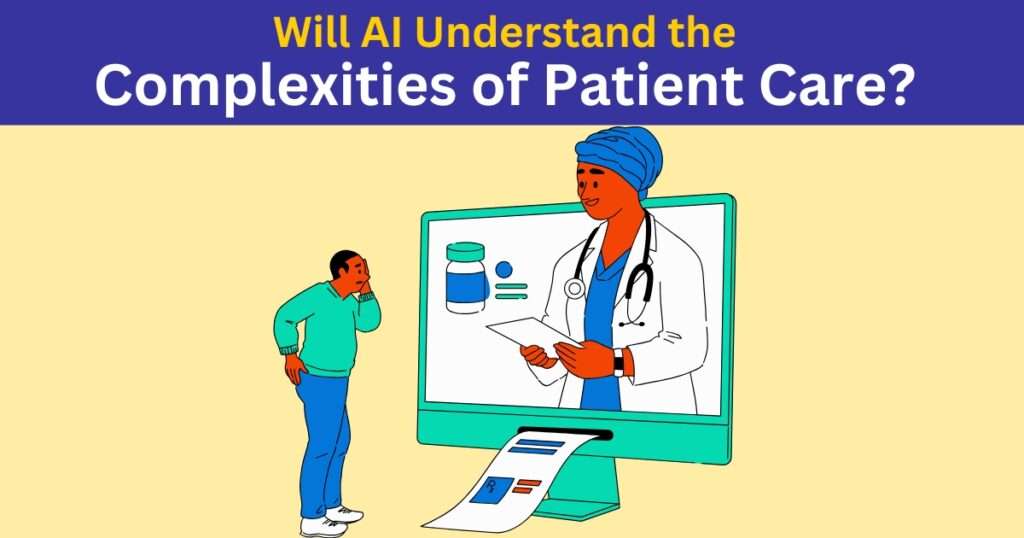Explore healthcare chatbots transforming patient experiences and workflows.

In the ever-evolving landscape of customer service, businesses are seeking innovative solutions to enhance efficiency and deliver unparalleled support to their customers. Automation has emerged as a game-changer, streamlining processes and revolutionizing the way companies interact with their clientele. In this comprehensive guide, we will delve into the world of automating customer service, exploring its benefits, implementation strategies, and the technologies driving this transformative shift.
I. Understanding the Need for Automation in Customer Service (300 words)
A. The Growing Demand for Instant Support
As consumers increasingly demand swift resolutions and round-the-clock assistance, businesses are recognizing the need to augment their customer service capabilities.
The rapid pace of modern life has cultivated a culture of immediacy. Customers want solutions to their problems instantly, and delays in response time can lead to dissatisfaction and, in some cases, brand abandonment. Automation addresses this demand head-on, providing businesses with the tools needed to offer real-time support.
B. Challenges Faced by Traditional Customer Service
Traditional customer service models often struggle to keep up with the escalating volume of queries, leading to delays and frustrated customers.
The traditional approach, relying solely on human agents, poses inherent limitations. The human workforce has its constraints, such as limited working hours and the inevitability of fatigue. Additionally, the manual nature of many customer service tasks can result in errors and inconsistencies. Automation, by contrast, offers a scalable solution that operates 24/7, ensuring a prompt and consistent customer experience.

II. The Benefits of Automating Customer Service
A. Enhanced Efficiency and Scalability
Automation enables businesses to handle a higher volume of customer interactions seamlessly, ensuring scalability without compromising on service quality.
One of the most significant advantages of automation is its ability to process large volumes of customer queries simultaneously. This scalability is crucial for businesses experiencing fluctuations in customer demand. Whether it’s a sudden surge in inquiries due to a promotional campaign or the need to handle international customers across different time zones, automated systems can manage these challenges efficiently.
B. 24/7 Availability
Automated systems empower companies to provide support around the clock, catering to global audiences and different time zones.
Customer service is no longer confined to specific business hours. With the global nature of the internet and the rise of e-commerce, customers expect assistance at any time. Automated systems, such as chatbots and virtual assistants, ensure that customers receive immediate responses, enhancing satisfaction and loyalty.
C. Cost Savings
By automating routine tasks, businesses can reduce labor costs and allocate resources more effectively, optimizing overall operational expenses.
Traditional customer service models can be resource-intensive, requiring a significant workforce to handle inquiries, especially during peak times. Automation mitigates this by handling routine tasks, allowing human agents to focus on more complex issues that require personal attention. This not only saves costs but also enhances the overall efficiency of the customer service operation.
III. Key Technologies Powering Automated Customer Service
A. Chatbots and Virtual Assistants
Intelligent chatbots and virtual assistants leverage artificial intelligence (AI) to engage with customers, answer queries, and provide personalized assistance.
Chatbots and virtual assistants have become the face of automated customer service. These AI-driven entities can simulate human-like conversations, providing a seamless experience for users. They utilize natural language processing (NLP) algorithms to understand user input, analyze intent, and generate contextually relevant responses. This not only streamlines customer interactions but also ensures that users feel heard and understood.
B. Natural Language Processing (NLP)
NLP technology enhances the ability of automated systems to understand and respond to customer inquiries in a natural and human-like manner.
The effectiveness of automated customer service hinges on the system’s ability to comprehend and generate language as humans do. NLP plays a pivotal role in achieving this by enabling machines to understand the nuances of human language, including context, sentiment, and intent. This technology ensures that automated responses are not only accurate but also tailored to the individual customer’s needs.
C. Robotic Process Automation (RPA)
RPA automates repetitive tasks, freeing up human agents to focus on complex issues that require a personal touch.
While chatbots and virtual assistants excel at customer interactions, RPA takes automation a step further by handling back-end processes. Repetitive, rule-based tasks that do not necessarily involve direct customer interaction can be automated through RPA. This includes tasks like data entry, order processing, and information retrieval. By automating these routine processes, businesses can significantly reduce the workload on human agents, allowing them to concentrate on tasks that require empathy, creativity, and problem-solving skills.

IV. Implementing Automated Customer Service: Best Practices
A. Assessing Customer Needs
Before implementation, it’s crucial to understand customer expectations and design automation processes that align with their preferences.
Implementing automated customer service is not a one-size-fits-all endeavor. Different businesses cater to diverse customer bases with varying needs and preferences. Therefore, before embarking on the automation journey, it is essential to conduct a thorough analysis of customer behavior, expectations, and pain points. This information serves as the foundation for designing automated processes that genuinely enhance the customer experience.
B. Seamless Integration with Human Agents
Combining automated systems with human intervention ensures a balanced and effective customer service approach.
Automation is a powerful tool, but it is not a replacement for human interaction. Striking the right balance between automated systems and human agents is key to delivering a holistic customer experience. Automated systems can handle routine queries and tasks, while human agents can step in when a more personalized touch is required. This hybrid approach ensures that customers receive efficient service without sacrificing the human element.
C. Continuous Monitoring and Improvement
Regularly monitoring automated systems and gathering feedback allows businesses to make necessary adjustments and improvements.
The implementation of automated customer service should not be a one-time effort. Continuous monitoring and analysis are crucial to ensure that the automated systems are functioning optimally and meeting customer expectations. Customer feedback, both positive and negative, provides valuable insights that can be used to refine and enhance automated processes. Regular updates and improvements based on real-time data contribute to the ongoing success of automated customer service initiatives.
V. Overcoming Challenges and Potential Pitfalls
A. Building Customer Trust
Despite the numerous benefits, challenges such as customer trust issues and potential miscommunication need to be addressed proactively.
One of the primary concerns customers may have with automated systems is a perceived lack of personalization and understanding. Building trust in automated customer service involves transparent communication about the use of technology, ensuring that customers feel their concerns are being heard and addressed. Providing clear information about how data is handled, emphasizing security measures, and offering options for human interaction when needed can help alleviate trust issues.
B. Potential Miscommunication
The reliance on automated systems introduces the risk of miscommunication, as machines may not always fully understand the nuances of human language.
Miscommunication can lead to frustration and dissatisfaction among customers. To mitigate this risk, businesses should continuously improve the language processing capabilities of their automated systems. Investing in advanced NLP algorithms, machine learning, and ongoing training data updates can enhance the accuracy and effectiveness of automated communication. Additionally, providing users with easy access to human support when needed ensures that any potential miscommunications can be promptly addressed and resolved.
Conclusion
As businesses strive to deliver exceptional customer experiences in the digital age, automating customer service has become a strategic imperative. By embracing the technologies and best practices outlined in this guide, companies can not only meet but exceed customer expectations, paving the way for sustainable growth and success in the competitive marketplace.
The era of automated customer service is here, and those who embrace it will undoubtedly lead the way in shaping the future of customer support. Embracing automation is not just a technological evolution; it is a fundamental shift in how businesses connect with their customers, providing a glimpse into a future where customer service is seamless, efficient, and deeply personalized.
For more such amazing content follow us here!





